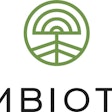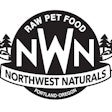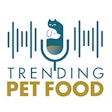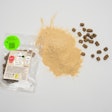Recent consumer-funded petfood testing coordinated by the Association for Truth in Pet Food has drawn responses from the petfood industry, which is questioning the methods used and the relevance of the results.
The Pet Food Institute (PFI) released a statement outlining the testing each product undergoes before it reaches the shelves, and said that simple test results don't provide the complete safety picture. "Petfood ingredients and products undergo rigorous testing by petfood companies, FDA (Food and Drug Administration) and state regulators to ensure safety, quality and appropriate levels of nutrition," said PFI. "The test results by themselves do not provide sufficient information to appropriately draw conclusions. Additional information is needed, such as the sampling method and laboratory materials used, measures taken to prevent contamination of samples, analytical methods employed, and test controls in place."
According to PFI, the testing results actually reaffirm the record of safety in petfood:
- Mycotoxins detected were well below the levels set by FDA and were essentially at background levels.
- Nutrient levels overall were consistent with the AAFCO (Association of American Feed Control Officials) nutrient profiles. Variation from the AAFCO nutrient profiles can be validated by conducting a feeding protocol using a particular cat or dog food product. Therapeutic products are fed under the direction and oversight of a veterinarian and may be designed to vary from the AAFCO nutrient profiles as part of the approach to addressing a particular health condition.
- The findings reported do not identify any bacterial species associated with foodborne illness or food spoilage.
- The most common foodborne pathogens were not detected in the test results, again validating the safety of the products tested.
Phyllis Entis, MSc., SM(NRCM), an author and food safety microbiologist, said the consumer-funded testing focused on all the wrong things. "What I find 'shocking and sad' is the waste of consumers' money in a wild goose chase after low-level pathogens of minimal risk to either humans or their pets," she said, in a post on FoodSafetyNews.com. Entis asked why the petfood samples weren't tested for known animal and human pathogens such as Salmonella and Campylobacter, and said that without providing species-level identification of bacteria, the results were useless.
"I acknowledge the good intentions of Susan Thixton and the Association for Truth in Pet Food, but I am appalled at the way in which this study was designed and carried out," said Entis. "The portions of the study relating to bacterial analysis and presentation of the mycotoxin results are the epitome of junk science. The pet-loving consumers who funded this study—and their dogs and cats—deserved far better."
In response, Thixton said the study is in no way "junk science," listing the scientists who oversaw the project and providing a bio of INTI Service Corp., the company the scientists work for. She also defended the pathogens tested and the information in the report. "The information provided in the full report was quoted from FDA, the Centers for Disease Control and the Food and Agriculture Organization of the United Nations," said Thixton. "I am by no means a scientist, so I relied on information from these well-known organizations to provide risk information to consumers."
UPDATE:
Entis has responded to Thixton's clarifications, defending her "junk science" stance.


















